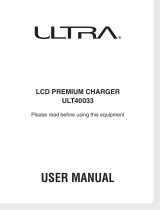
E-7
Warning!
■ Handling the Coin Type Lithium Battery
● Do not recharge coin type lithium battery. Doing so may cause it to leak fluid,
overheat, explode or burst into flames.
● Do not put the coin type lithium battery in open flame, or apply solder directly
to the coin type lithium battery. Doing so may cause it to leak fluid, overheat,
explode or burst into flames.
● Do not use the coin type lithium battery with the positive and negative poles
reversed. Do not store it with metal objects such as necklaces or hairpins,
doing so may cause the positive and negative poles to be shorted.
● Keep the coin type lithium battery out of the reach of children. If it is
swallowed, contact a physician immediately.
● If the alkali fluid gets in your eye, rinse the eye with water and contact a
physician immediately.
● If the alkali fluid gets in your mouth, rinse your mouth with water and contact
a physician immediately.
● If the coin type lithium battery leaks fluid or emits a strange smell,
immediately remove it from near heat or flames. Burning may cause it to
explode or burst into flames.
● When storing or disposing of the coin type lithium battery, cover the
terminals with tape to insulate them. Mixing them with other batteries or
metal objects may cause the coin type lithium battery to short, leak fluid,
overheat, explode or burst into flames.
■ Lithium-ion Battery Pack
● Do not put a battery pack in microwave ovens or pressure cookers. Doing so
may cause the battery pack to overheat, explode or burst into flames.
● Do not use a battery pack that smells strange, is overheating, is a strange
color, or is a strange shape. Doing so may cause the battery pack to
overheat, explode or burst into flames.
● If the amount of time period the battery pack can serve becomes
considerably short, stop using it. It may indicate the possibility of a
malfunction in the battery pack. Continued charging the battery pack creates
the danger of heat emission, explosion, and fire.
● Stop charging the battery pack after the recommended time even if it is not
fully charged. Continuing to charge the battery may cause the battery pack
to overheat, explode or burst into flames.
● If the battery pack leaks fluid or emits a strange smell, remove it from near
heat or flames. Burning may cause the battery pack to explode or burst into
flames.
● Should fluid from the battery pack accidentally get into your eyes, do not rub
them. Immediately rinse your eyes with clean water such as tap water and
then consult a physician immediately.





















